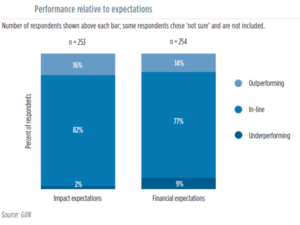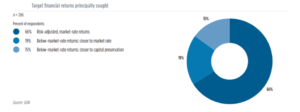By Joseph Saviour, Senior Analyst, Distributed Energy
Companies and banks are eager to find investments that generate business and social returns. Why? There are a variety of social/environmental problems that needs addressing. These include social issues such as humanitarian crisis of refugees, alleviating the impact from climate change-induced extreme weather events, reducing air pollution in cities, addressing ocean plastics, transforming our energy system to clean energy and finding sustainable ways of food production.
The Global Impact Investors Network (GIIN) define impact investments as “investments made with the intention to generate positive, measurable social and environmental impact alongside a financial return”.
Over the last decade, there have been similar ideas that have evolved alongside impact investing – ethical investing, sustainable investing and socially responsible investing (SRI). Global initiatives and targets such as the United Nations launching the Sustainable Development Goals (SDGs) have helped catalyse the implementation of these financial tools. For many impact investors, funds, and philanthropists, the 17 SDG’s have become a guideline for key performance indicators. At Distributed Energy, we invest in renewable assets that allow you to make an attractive return while doing good for the environment.
Why impact investing? – Investing for good
Different types of investors are entering the emerging impact investing market. This offers diverse and viable opportunities for advancing social and environmental solutions.
As Millennials start to gain more and more equity in the markets, this is an absolute sector that will continue to grow. Currently, there are financial ventures using creative means to change the world through social impact investing. The Australian-based Impact Investment Group (IIG) have several on-going funds aimed at providing the opportunity to invest in renewable energy that is part of Australia’s long term transition to a clean energy system. Another notable mention is Social Ventures Australia (SVA). The venture offers social impact bonds with an overall objective aimed at alleviating disadvantages for individuals and communities. The bonds enable service providers to enter into outcomes-based contracts with governments that promote social change.
The on-going coronavirus pandemic has shown what one crisis could do to health, economy and livelihood – as the pandemic unfolds around us, our entire world is changing in unimaginable ways. It has also brought to light the relevance and significance of impact investing now more than ever. Financial ventures such as CNote, an award-winning financial platform operating out of California, are helping current and potential investors determine how to respond to address some of the challenges that this pandemic raises – both now, in the medium term, and in the long term. CNote are primarily focused on helping fund female and minority-led small businesses, affordable housing development, and financially underserved communities across America. However, the pandemic brought to attention the critical need for cash and bridge financing, especially for small businesses. In order to bridge this financing gap, CNote created the Rapid Response Fund to quickly deploy patient loan capital to CDFIs so they can fill the critical lending gap until federal and state aid is implemented.
What we’ve seen happening, more so now, are financial ventures with a targeted social investment mandate. This is a result of specific motivations and values investors hope to accomplish with their investments. Some common motivations include:
- Stabilising your portfolio and LOWERING the VOLATILITY in your portfolio. Investing with Distributed Energy and the likes of CNote and IIG is one way to reduce your portfolio risk.
- Organisations providing impact investing services can PROVIDE CLIENT INVESTMENT OPPORTUNITIES to both individuals and institutions that want to align values with investments.
- Government investors and development finance institutions can PROVIDE PROOF OF FINANCIAL VIABILITY for private-sector investors while targeting specific social and environmental goals.
Who all are making impact investments?
There are two sides of any impact investing deal: the impact investor and the impact investee. The goal is for both sides to benefit. As an impact investor, investments are made with the intention to generate measurable social impact alongside a financial return. The Impact Investee is a mission-driven organisation (for-profit, non-profit or hybrid) with a market-based strategy and clearly defined and accepted performance metrics/targets.
The growing impact investment market provides capital to address the world’s most pressing challenges in sectors such as sustainable agriculture, renewable energy and conservation. The GIIN estimates the current size of the global impact investing market to be $502 billion.
Impact investments has attracted a wide variety of investors, both individual and institutional. Some of these include:
• Fund Managers
• Development finance institutions
• Diversified financial institutions/banks
• Private foundations
• Pension funds and insurance companies
• Family Offices
• Individual investors
• NGOs
• Religious institutions
How do impact investments perform financially?
Impact investors have diverse financial return expectations. Some intentionally invest for below-market-rate returns, in-line with their strategic objectives. Others pursue market-competitive and market-beating returns, sometimes required by fiduciary responsibility. We’ve shared some of the key findings from investors surveyed in the GIIN’s 2019 Annual Impact Investor Survey. Respondents reported that portfolio performance overwhelmingly meets or exceeds investor expectations for both social and environmental impact and financial return, in investments spanning emerging markets, developed markets, and the market as a whole.


Moving Forward
There is much more that needs to be done to bridge the funding gap to achieve the SGD’s by 2030 and help the world from irreversible consequences. The potential of making returns from impact investing is comparable to traditional investments, and although are slightly lower depending on the benchmark, purpose-driven people and investors are aware of the importance of the change on expectations over the greater benefit for society.
Whether impact investing is a strategy you would consider will depend on your values and goals, and on how well you understand the opportunities before you. But what is for certain is impact investing is here to stay and to grow exponentially over the next decade and beyond.
The key is to take action – starting today.



